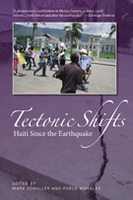
Article Artículo
The Agenda is CUTS in Social Security and Medicare, Not "Changes"Dean Baker / January 03, 2013
Article Artículo
It’s Official: Iran’s Presence in the Region a Threat to U.S., according to Congress and ObamaAlexander Main / January 02, 2013
Article Artículo
Look Beyond the Fiscal CliffDean Baker
CNN, January 2, 2013
Dean Baker / January 02, 2013
Article Artículo
Prospects for 2013Dean Baker
New Left Project, January 2, 2013
Dean Baker / January 02, 2013
Article Artículo
The Fiscal Cliff Deal: Who Got Thrown Off?Dean Baker
The Guardian Unlimited, January 1, 2013
Dean Baker / January 02, 2013
Article Artículo
Washington Post Continues "Campaign to Tame the Debt"Dean Baker / January 02, 2013
Article Artículo
Robert Samuelson Is Very Upset That President Obama Didn't Push for Cuts to Social Security and MedicareDean Baker / January 02, 2013
Article Artículo
The Beveridge Curve and Structural UnemploymentThere is a whole industry of economists and policy types who are incredibly anxious to find evidence of structural unemployment. The reason is that structural unemployment implies a mismatch between the available jobs and the skills of the unemployed.
This is important because if our unemployment problem is structural then simply using macroeconomic policy to generate more demand won't be of much help. If we want to get people back to work we have to get them the right skills or in the right place (there can be a locational mismatch as well) for the jobs that are available. That is a very difficult and much more complicated process than just spending money.
Recently some proponents of the structural unemployment view of the economy have been highlighting an outward shift in the Beveridge Curve. The Beveridge Curve relates unemployment to the vacancy rate (the number of job openings divided by the number of jobs). In general, higher rates of unemployment are associated with lower vacancy rates. However, in the last couple of years, there has been some increase in the vacancy rate without as large a drop in unemployment as would ordinarily be expected. This is taken as evidence that employers are having difficulty finding workers with the necessary skills in spite of the large number of unemployed workers. This is the story of structural unemployment.
A new paper from the Boston Fed by Rand Ghayad and William Dickens looks at this shift in the Beveridge Curve more closely. It finds a very interesting story. If we look at the long-term unemployed (people who have been out of work for more than 26 weeks) we see this shift clearly.
CEPR / January 01, 2013
Article Artículo
Since When is Chief Justice Roberts an Expert on the Budget and the Economy?Dean Baker / January 01, 2013
Article Artículo
Steve Rattner's Defective Social Security Chart in NYTDean Baker / January 01, 2013
Article Artículo
David Brooks Reports that the NYT Can't Find Conservative Columnists Who Know ArithmeticDean Baker / January 01, 2013

book Libro
Tectonic Shifts: Haiti Since the EarthquakeJake Johnston and Mark Weisbrot / January 01, 2013
Article Artículo
Pentagon Warns that Sequester of 8 Percent of Its Budget Could Lead to Furloughs for 140 Percent of Its EmployeesDean Baker / December 31, 2012
Article Artículo
Wall Street Journal Tries to Build Fiscal Cliff HysteriaDean Baker / December 31, 2012
Article Artículo
New York Times Gets It Fundamentally Wrong on the Budget ImpasseDean Baker / December 31, 2012
Article Artículo
Robert Samuelson is Upset that Manufacturing Jobs Seem to be Returning to the United StatesDean Baker / December 31, 2012
Article Artículo
Bernanke Helps the Economy and the Masses with Low Interest RatesDean Baker / December 30, 2012
Article Artículo
Republicans Are Demanding a 3 Percent Cut in Social Security Benefits as Part of a Budget DealDean Baker / December 30, 2012
Article Artículo
When It Comes to Recoveries, "Rip-Roaring" Ain't What It Used to Be at the Washington PostDean Baker / December 30, 2012